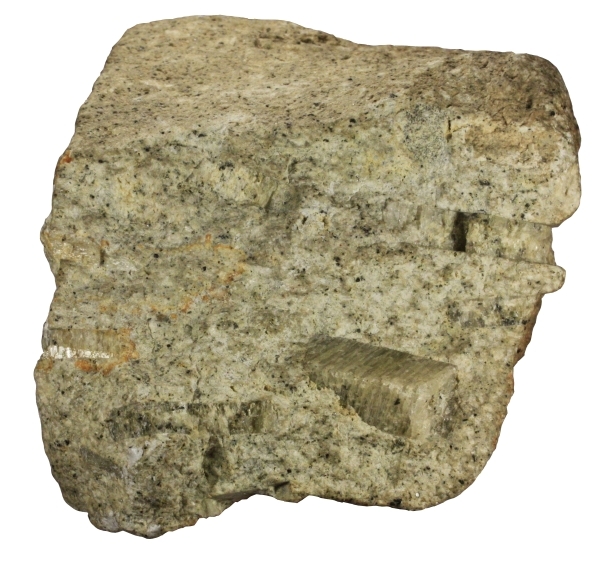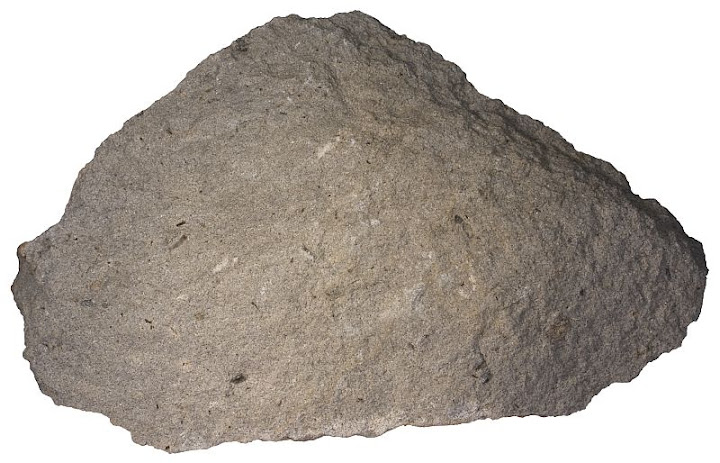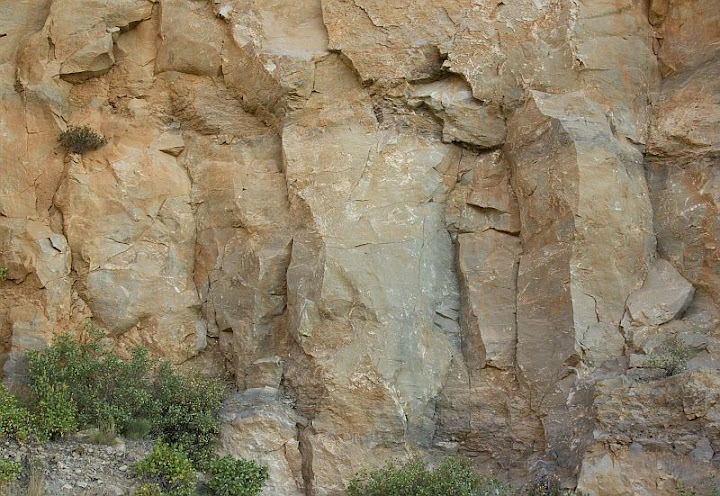Trachyte is a fine-grained and generally light-colored volcanic rock that usually has a rough surface to the touch which is the reason it was given that name (trachys is ‘rough’ in the Greek language). It was either Alexandre Brongniart or René Just Haüy who first defined that rock type (different sources go against each other in this question). They were French mineralogists who both left a lasting mark in the history of geology.

A sample from the type locality in Germany. Large sanidine phenocryst in the lower right. Width of sample 8 cm.
It is a feldspar-rich volcanic rock. It has been defined several ways in the past. Rocks that are nowadays known to us as andesites or rhyolites have both been named trachytes in the past. Trachyte is chemically between these two. We can say that the definition of this rock type is narrower now and it is not very abundant although its occurrences are widespread.
Trachyte usually contains lots of K-feldspar sanidine but plagioclase, anorthoclase, and sometimes feldspathoids are common as well. However, feldspathoid-bearing rocks are often named foid-trachytes (if we use QAPF diagram instead of TAS diagram) and trachytes that contain lots of plagioclase may be more properly described as trachyandesite (known also as latite). Volcanic rocks that are similar to this rock are rhyolite (contains more quartz), phonolite (more feldspathoids), trachyandesite (more plagioclase and dark minerals), and dacite (more quartz and plagioclase). See TAS diagram below to see how these rock types differ in their chemistry.
Trachyte is a volcanic equivalent of syenite. Syenite is a feldspar-rich plutonic rock which is similar to granite but lacks or contains very little quartz. Mafic minerals in trachyte are usually biotite, amphiboles (hornblende or arfvedsonite), and pyroxenes (diopside, augite, aegirine). Aegirine and arfvedsonite occur in the rock when it is rich in alkali metals (compositionally close to phonolite). Trachyte that is unusually rich in silica (>20%) is named trachydacite although in the QAPF diagram we would name it a rhyolite instead. So, these classification schemes are really not flawless.
Trachyte is probably a product of magmatic differentiation. Its parent magma was perhaps basaltic but it evolved (its composition became enriched in alkalies and silica) by the removal of mafic minerals. It may be associated with phonolite, latite, rhyolite, etc. which means that the same volcano has extruded magmas with slightly different composition. Trachyte is not necessarily volcanic in the strict sense. It may also form underground but still relatively close to the surface because its grain size is fine. Coarse-grained rocks with a trachytic composition are know as syenites as said before. Magma with a trachytic composition may also solidify as obsidian or pumice.

TAS diagram with the field of trachyte annotated.

A sample with anorthoclase phenocrysts from Gran Canaria. Width of sample is 6 cm.

Fine-grained sample from Tenerife. Width of sample is 15 cm.

An outcrop of trachyte in Tenerife. Width of view is about 10 meters.
Leave a Reply